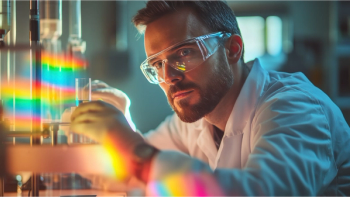
NIR Capabilities Added to Metrohm OMNIS Platform
Metrohm considers NIR spectroscopy to be fast, easy to use, non-destructive, and chemical-free, and has developed a new addition to its platform for the analysis of liquid, solid, or a combination of samples in a short time.
Metrohm USA, an instrument manufacturer headquartered in Riverview, Florida, has announced an expansion to its OMNIS analytical platform with the introduction of OMNIS NIRS, adding near-infrared (NIR) spectroscopy capabilities designed to handle three distinct sample types (1).
The OMNIS platform, Metrohm says, does not require the user to have advanced knowledge of chemometrics—in fact, no knowledge at all, according to
According to an April 10 press release from the company, OMNIS NIRS Liquid caters to liquid samples, OMNIS NIRS Solid for solid and viscous ones, and OMNIS NIRS Liquid/Solid for dual analysis (1). The “multi-parameter” capability of the OMNIS NIR Analyzer is intended to have a streamlining effect that produces results in under 10 s for both liquid and solid samples (2). Solid sample measurement is achieved in what the company calls an “automated rotation mode” promoting high reproducibility of results, even in the case of extremely inhomogeneous samples (2).
Metrohm’s release of this new addition to the OMNIS line coincided with the Analytica 2024 conference in Munich, Germany from April 9–12, where a session on new instrumentation in spectroscopy
Two of the broader aspects of the NIR-titration integration that Metrohm said this newest innovation can boast are reducing or eliminating user error (to “virtually zero”) and complying with standard operating procedures (SOPs) (1,2). The platform’s ability to be customized can fit the needs of specific users and, with proper deployment, improve laboratory efficiency.
Zeroing in further on the particulars of the OMNIS NIR Analyzer, Metrohm said liquid samples can be adjusted in a short period of time to any temperature between 25–80 ºC, and large sample quantities are able to be analyzed quickly with no software interaction (1). Also, the OMNIS Model Developer (OMD) is designed to automatically establish prediction model parameters, streamlining the integration of NIR even more (2).
Metrohm has provided a PDF brochure with more information about the OMNIS NIRS at this link:
References
(1) Metrohm Introduces OMNIS NIRS: Expanding Capabilities in Near-Infrared Spectroscopy. Metrohm USA. Metrohm AG, 2024 (accessed 2024-04-10).
(2) OMNIS NIRS Launched. Metrohm USA. Metrohm AG, 2024.
(3) Chasse, J. New Instrument Development in Spectroscopy. Spectroscopy. MJH Life Sciences, 2024.
Newsletter
Get essential updates on the latest spectroscopy technologies, regulatory standards, and best practices—subscribe today to Spectroscopy.




